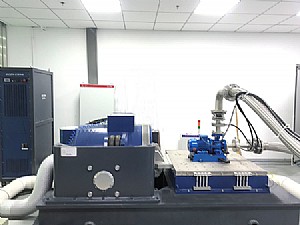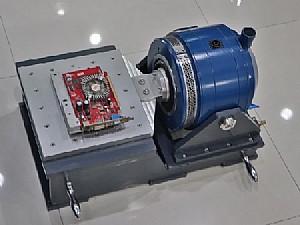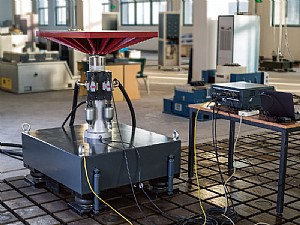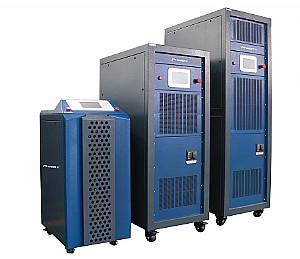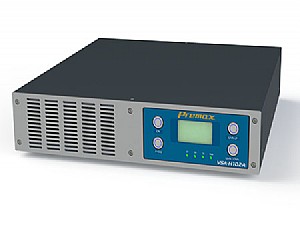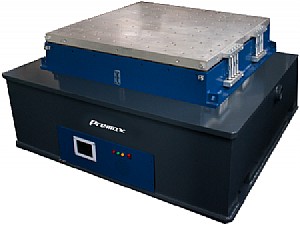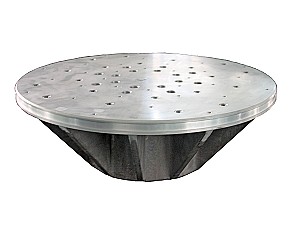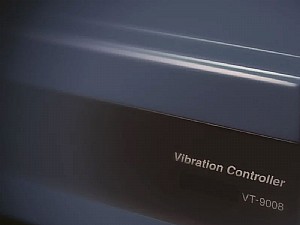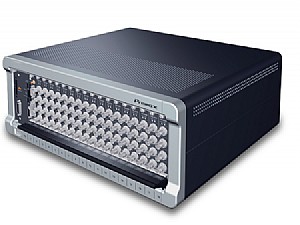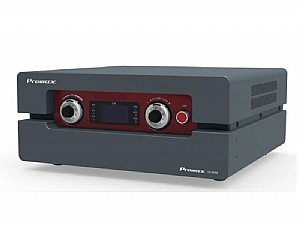- Home
- Vibration Shaker
Vibration Shaker
Premax has accumulated rich experiences in the field of vibration Shaker and controller nearly twenty years.
It has provided reliable and innovative vibration shaker system to thousands of customers all over the world, including electro-dynamic shaker and hydraulic shaker, advanced servo-hydraulic and vibration controller, customized head expander and slip table, fixtures and other accessories. Besides.
Premax also provides excellent service.
- ED Shaker
-
- Miniature Shaker
-
- Hydraulic Shaker
-
- Power Amplifier
-
- Linear Power Amplifier
-
- Horizontal Slip Tables
-
- Head Expander and Fixtures
-
- Vibration Controller
Vibration Controller
Premax has accumulated rich experiences in the field of vibration Shaker and controller nearly twenty years.
It has provided reliable and innovative vibration shaker system to thousands of customers all over the world, including electro-dynamic shaker and hydraulic shaker, advanced servo-hydraulic and vibration controller, customized head expander and slip table, fixtures and other accessories. Besides.
Premax also provides excellent service.
- VT-9008: ED Vibration Controller
-
- VT-8008: MIMO Vibration Controller
-
- VT-6008: Servo Hydraulic Controller
-
- Application
- About
- Contact
Hydraulic Shaker System
Application
Hydraulic Vibration Test Systems
There are many types of vibration systems to choose from: mechanical (fixed or manually adjusted displacement), electro-dynamic, and servo-hydraulic. These are some of the more commonly used systems for package or product reliability testing.
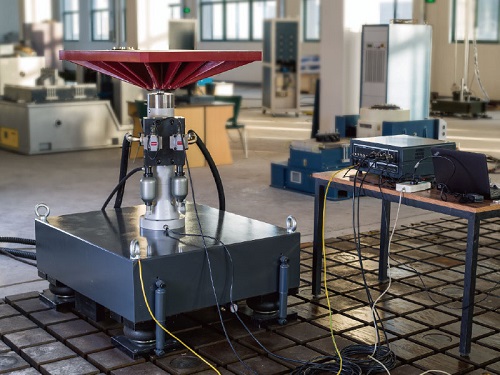
Read the description below and you will quickly realize which system is right for you.
Size & weight
This will determine how large of a vibration table will be needed, as well as determine the force needed to move both the table and your test item. Typically electro dynamic systems have limitations on how large and heavy your test item can be, so a servo-hydraulic system would be better suited for larger, heavier payloads.
Sine and random
Sine (also known as sinusoidal) as it pertains to vibration testing, is a repeating motion with a measureable amplitude and frequency, typically used for determining resonant frequencies in a product or package. It is also used for low frequency repetitiveshock testing. Mechanical systems can typically vary the frequency throughout some range, but are limited to a fixed amplitude. Servo-hydraulic systems have the ability to vary both amplitude and frequency at the same time (or acceleration (g) - the result of a given frequency and displacement).
Random vibration is simply that; random. It is a constantly changing vibration, and best described in a power spectral density (PSD) curve. A PSD plot presents random vibration as an average intensity. Random vibration is desirable for package testing because this type of motion occurs in the real world. Servo-hydraulics can perform both sine and random, where mechanical systems are limited to sine only.
Frequency range
Many vibration studies have shown that most ground transportation environments present vibration frequencies between 1-200Hz, with air transportation environments presenting frequencies between 1-300Hz. If you're performing sine sweep for resonance testing, 1-200Hz is typical, but some may go out to 500Hz. In all cases you should refer to the testing standards required by your customer. In many cases a reference will be made to a test organization such as ISTA, ASTM, ISO, etc. They will spell out the test frequencies for both sine and random when applicable. Electro-dynamic systems typically are unable to provide vibration frequencies below 5Hz, where the greatest displacement occurs, so servo-hydraulics are the ideal choice to meet the low frequency requirements of the various transportation environments.
Acceleration levels
Acceleration is the change in velocity over a period of time. In simpler terms, acceleration will be determined by the amount of movement (displacement) and speed (frequency) of your test item. In vibration testing, acceleration is measured in units of (g) for sine, and (g)rms for random vibration. In vibration testing, it is the combination of the required acceleration and the total moving weight that determines what force the actuator will need to be. The basic formula for determing force is: F=MA, where M is the mass and A is acceleration
Table size & performance
We start with the size of your largest test item. The table must be physically large enough to hold your test item and must have sufficient performance (frequency range) to meet your test
requirements. In most cases the table construction is an aluminum weldment, but when more rigid tables are needed for increased performance, magnesium will be used. The combined weight of the table and test item are used in determining the size of the reaction mass and force actuator.
Servo-valve
The servo-valve directs the flow of high pressure hydraulic fluid to both ends of the actuator in alternating sequence forcing the actuator to move. The amount of flow and duration determines the displacement and frequency at which the actuator moves. The servo-valve type and size is based on the flow requirements of the actuator (larger actuators have greater flow area) and frequency needed by your test requirements.
Hydraulic power supply (hps)
The hydraulic power supply is what feeds high pressure hydraulic fluid to the actuator (via the servo-valve) forcing it to move. The power supply must provide sufficient pressure and flow to the servo-valve to meet the demand of your test requirements. Since the flow is regulated and limited by the flow rating of the servo-valve, the power supply flow rating will typically be sized at or below the servo-valve rating, but never below the highest flow requirements of your test.
Control system
A basic control scheme consists of 2 accelerometers (one for table control and one for the test item), a vibration controller and a servo controller. The basic control process starts with a demand generated by the vibration controller (your test profile), comparing it against the table accelerometer feedback (current status), then sending a signal to the servovalve controller (the adjusted demand), controlling the servovalve movement. This is an instantaneous closed-loop control process. The vibration controller is at the heart of the system, where sine and random test profiles are created and the "demand vs. actual" control takes place.
Reaction mass
The reaction mass is the anchor of the HV Series system providing the necessary support and stabilization for the system during testing. The reaction mass weight should typically be 2-3 times the combined weight of the table and test item to provide adequate support. In cases of very tall test items with a higher center of gravity, heavier reaction masses will be necessary.
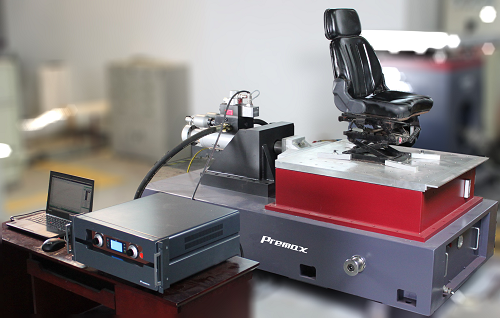
How to size the right system - once you've decided on a servo-hydraulic vibration system, the next step is to determine the right size system for your testing needs. Now, and in the future. Premax will ensure you have the right system and be within your budget.
Hi-Performance Tables
- Up to 500Hz performance
- Large variety of table sizes to choose from
- High strength aluminum alloy or magnesium
- Advanced weldment and stress relieved
- Uniform vibration across entire surface
- Mounting threaded inserts included, various sizes and patterns available
Reaction Mass
- Solid steel mass mounted on an air-mount suspension
- Isolates vibration forces from surrounding structures
- Minimized floor loading so system can be used on commercial grade floor
- Optimal size reduces system velocity-loss meaning a smaller hydraulic power supply can be used
- Extended corner plates provide added stability and easy-access
during installation
Hydraulic Power Supply (HPS)
- Provides water cooled, filtered, high pressure oil to servo-actuator
- Soft-start provides long life and reliability
- Sized according to need, up to 120HP
- Filter, temperature and low level safeties built-in
- Remote control of HPS permits it to be isolated at long distances
- Back-up visual temperature and level gauge included
- Uses standard DTE-25 grade hydraulic fluid
Servo-Valve
- Two-stage or three-stage high performance valves
- Nozzle-flapper design with mechanical feedback
- One or two valve configurations depending on performance needs
- Up to 500Hz, high flow capability
- 3000 psi operating pressure
- Internal filtration
Vibration, Servo Controllers
- Open architecture means flexibility in using any vibration controller that fits your needs
- As low as 1Hz control to meet ISTA and ASTM random test profiles
- Vibration controller operates with off-the-shelf PC
- Available in 2, 4, 8 or 16 channel configurations
- Includes sine and random testing as standard; resonance search and dwell, sine-on-random, random-on-random, classic shock, field data replication, and kurtosis control optional
- Intuitive graphical interface with custom reporting

